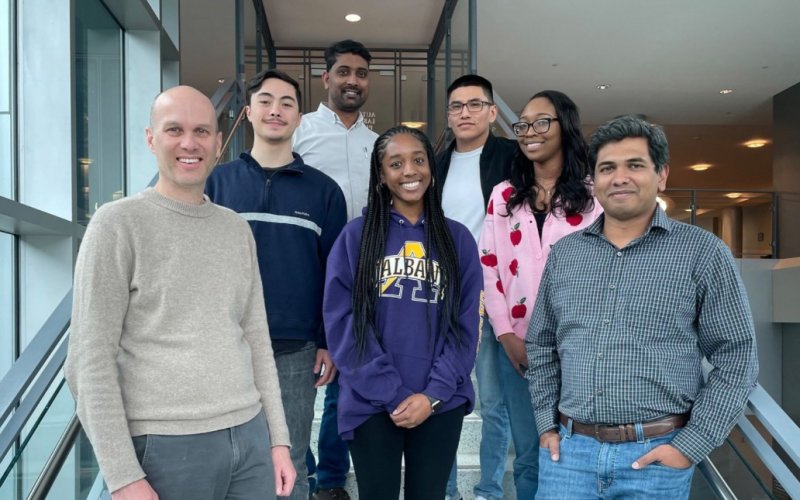Showcase 2024: Chemistry Major Explores DNA Nanoswitches for Forensics, Pharma

By Erin Frick
ALBANY, N.Y. (March 26, 2024) — Before starting at the University at Albany, Camryn Beckles wanted to pursue forensic science, and she knew that chemistry was a path that could take her there.
The first semester of her junior year, the Brooklyn native joined Ken Halvorsen’s lab in the Department of Chemistry at UAlbany’s RNA Institute in the College of Arts and Sciences. Beckles went on to participate in the Institute’s inaugural Research Experiences for Undergraduates program during the summer of 2023, and has continued working in the Halvorsen lab, supported by the Robert Moyer Fund, an endowed grant for undergraduate researchers at UAlbany.
“Starting out, I had no idea what majoring in chemistry would entail, but once I started taking classes, the topic became very interesting to me since I am a very analytical person and I like the idea of knowing why and how certain things are able to occur,” Beckles said.
Beckles is currently working on a research project focused on DNA “nanoswitches” — a type of biosensor that can be designed to detect the presence of specific target molecules. The research could someday be used to detect drugs at a crime scene or in the human body.
“This project consists of working with aptamers, which are single-stranded DNA or RNA molecules capable of binding to specific target molecules,” said Beckles. “These aptamers can be integrated into DNA nanostructures that we call DNA ‘nanoswitches,’ which reconfigure their shape in the presence of target molecules. When the target molecule associated with the aptamer is present, the nanoswitch will change its conformation from a linear ‘off’ state to a looped ‘on’ state, which will provide a distinct signal on an agarose gel.
“The nanoswitch that I am currently working on could potentially be used to analyze the binding of other aptamers to their targets. For example, there are aptamers for cocaine and aptamers that have been developed to detect fentanyl as well. The target that I am working with now is thrombin, which is present in an individual's blood. These aptamers could be used to detect samples of cocaine and fentanyl in blood samples, with forensic and medical applications.”
Beckles will present her research — titled “The Development of DNA Nanoswitches with Aptamer-Based Detection of Thrombin” — as part of the RNA Institute poster presentation at UAlbany Showcase Day on April 30.
Looking ahead, Beckles imagines herself working in either drug development or in a crime lab. “This is something I go back and forth with often because I just can’t make up my mind and I am still trying to find ways to reach my different goals.”
As a student enrolled in the Chemistry Department’s combined BS/MS degree program, Beckles will graduate with her BS in May, majoring in chemistry with a forensic emphasis, then will continue in the program and complete her master’s degree in Spring 2025.






